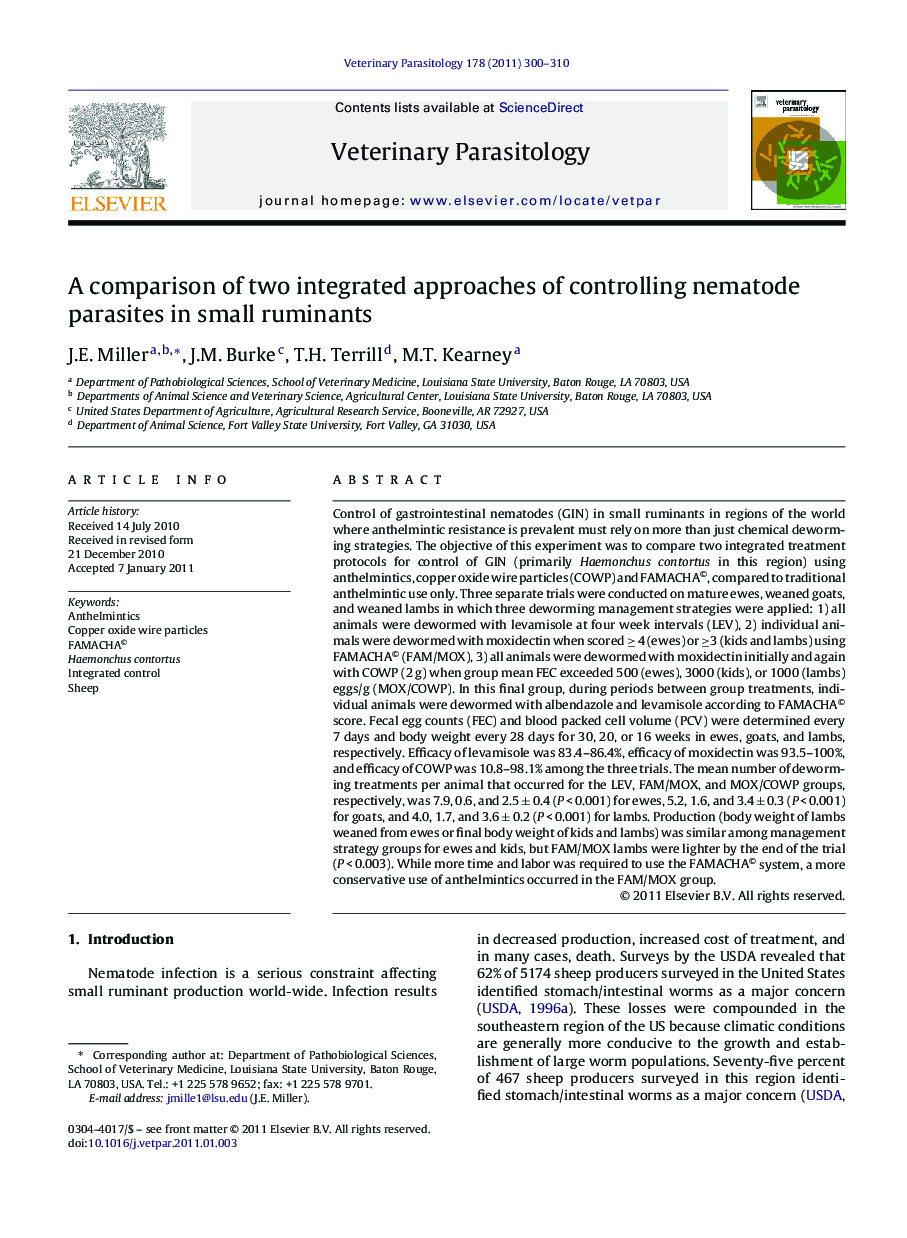| کد مقاله | کد نشریه | سال انتشار | مقاله انگلیسی | نسخه تمام متن |
|---|---|---|---|---|
| 2470342 | 1555725 | 2011 | 11 صفحه PDF | دانلود رایگان |

Control of gastrointestinal nematodes (GIN) in small ruminants in regions of the world where anthelmintic resistance is prevalent must rely on more than just chemical deworming strategies. The objective of this experiment was to compare two integrated treatment protocols for control of GIN (primarily Haemonchus contortus in this region) using anthelmintics, copper oxide wire particles (COWP) and FAMACHA©, compared to traditional anthelmintic use only. Three separate trials were conducted on mature ewes, weaned goats, and weaned lambs in which three deworming management strategies were applied: 1) all animals were dewormed with levamisole at four week intervals (LEV), 2) individual animals were dewormed with moxidectin when scored ≥ 4 (ewes) or ≥3 (kids and lambs) using FAMACHA© (FAM/MOX), 3) all animals were dewormed with moxidectin initially and again with COWP (2 g) when group mean FEC exceeded 500 (ewes), 3000 (kids), or 1000 (lambs) eggs/g (MOX/COWP). In this final group, during periods between group treatments, individual animals were dewormed with albendazole and levamisole according to FAMACHA© score. Fecal egg counts (FEC) and blood packed cell volume (PCV) were determined every 7 days and body weight every 28 days for 30, 20, or 16 weeks in ewes, goats, and lambs, respectively. Efficacy of levamisole was 83.4–86.4%, efficacy of moxidectin was 93.5–100%, and efficacy of COWP was 10.8–98.1% among the three trials. The mean number of deworming treatments per animal that occurred for the LEV, FAM/MOX, and MOX/COWP groups, respectively, was 7.9, 0.6, and 2.5 ± 0.4 (P < 0.001) for ewes, 5.2, 1.6, and 3.4 ± 0.3 (P < 0.001) for goats, and 4.0, 1.7, and 3.6 ± 0.2 (P < 0.001) for lambs. Production (body weight of lambs weaned from ewes or final body weight of kids and lambs) was similar among management strategy groups for ewes and kids, but FAM/MOX lambs were lighter by the end of the trial (P < 0.003). While more time and labor was required to use the FAMACHA© system, a more conservative use of anthelmintics occurred in the FAM/MOX group.
Journal: Veterinary Parasitology - Volume 178, Issues 3–4, 10 June 2011, Pages 300–310